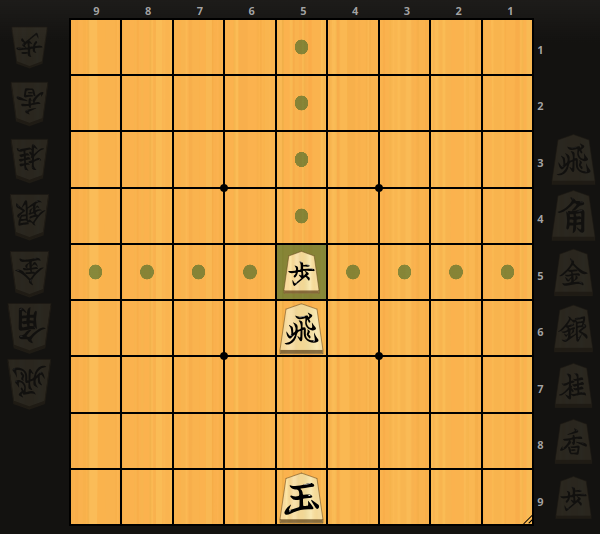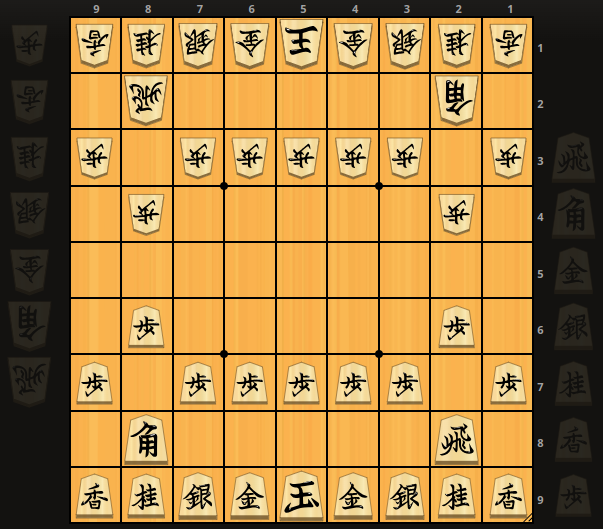Annanshogi
Variant similar to standard shogi, where pieces move like friendly pieces behind them
The rules of Annan shogi closely resemble those of standard shogi, with one notable exception. In Annan shogi, if a piece has another friendly piece directly behind it, the front piece moves in the same manner as the piece behind it. To better illustrate this rule, look at the following example picture.

You can observe that the pawn gains the ability to move like a rook due to the presence of a rook directly behind it. This introduces a layer of complexity to the gameplay, as the situation on the board can change rapidly.
Rule differences
This also leads to a few more rule differences compared to standard shogi. Assuming you're already familiar with the rules of standard shogi, let's focus on the specific differences between the two.
The most notable difference is the initial position, where the pawns in front of the rooks and bishops are moved one step towards the center of the board. This adjustment is made to make sure the pawns aren't too strong at the beginning of the game.

Another difference is that in Annan shogi, due to the potential sideways movement of pawns with the help of other pieces, it is possible for multiple pawns to end up on the same file. Having multiple pawns on the same file is therefore legal. But it remains illegal to drop a pawn onto a file that already contains another pawn of the same color.
In standard shogi, it is not legal to have pieces on squares where they have no possible moves. For instance, pawns and lances cannot occupy the last rank farthest from the player, and knights cannot be positioned on the last two ranks farthest from the player. But since in Annan shogi, these pieces have the ability to escape from those positions with the help of a friendly piece getting behind them. As a result, it is legal to move them to the farthest ranks without promoting them, or to drop them onto those squares.
In addition, there are more subtle differences in Annan shogi when it comes to being in check or blocking a check. Obvously you have the option to capture the checking piece or escape the check with your king. But in Annan shogi you can also capture the piece behind the checker, as long as doing so means that you are no longer in check.
If you want help translate this article into Japanese please post on github and I will also publish the Japanese version. Thanks!